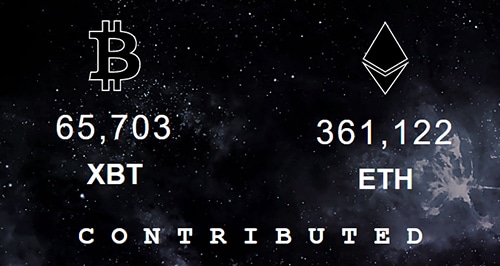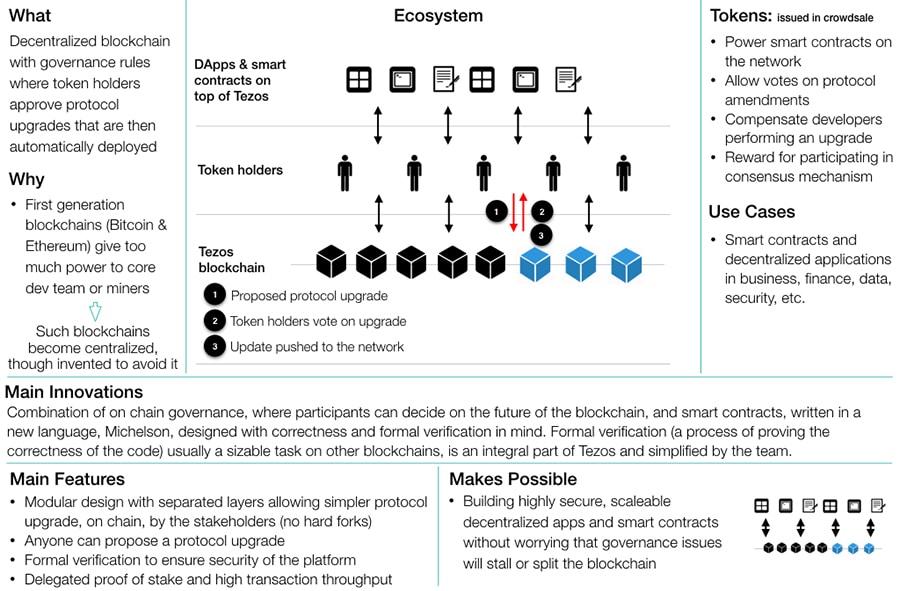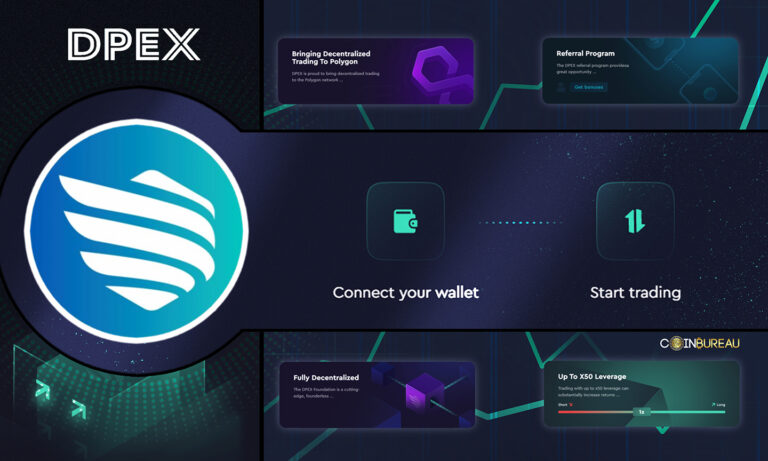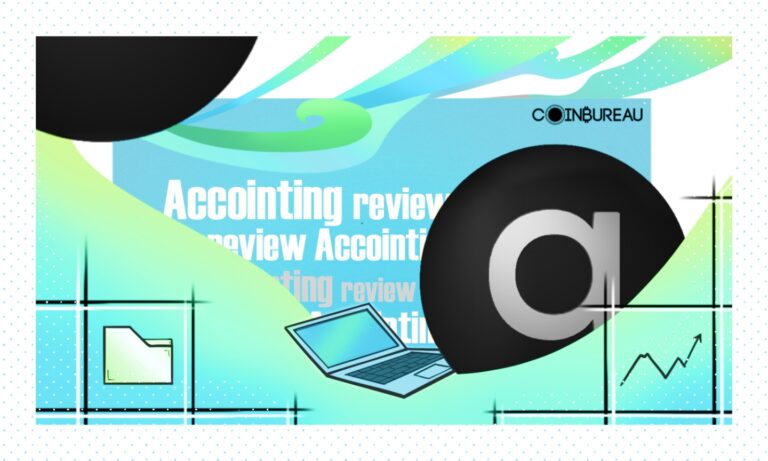In this Tezos (XTZ) review we will take a look at one of the most contentious blockchain projects over the past year.
What started as a blockbuster ICO with star backers and a strong team devolved into spurious lawsuits and intense infighting. Despite that though, it seems as if the team has managed to right the ship, restructured internally, allocated tokens and rolled out their mainnet.
Below I’ll outline the period of scandal and lawsuits, and then go on to explain what Tezos is for those who might want to invest now that the mainnet has been live for nearly a year, and investors have been able to claim their tokens.
With XTZ price remaining depressed following the 2018 bear market now could be a good time to get in as the idea behind Tezos is still a very good one
Page Contents 👉
ICO to Infighting
The history of Tezos is little more than a year old, but it’s already been quite a rollercoaster ride for investors and backers.
Tezos had its ICO, which was wildly successful, almost 1 year ago on July 14, 2017. It raised an astounding $232 million in one day, which was 10 times the founders expectations. It looked as if things were going well for Tezos indeed.
Unfortunately that wasn’t the case, as things soon spiraled rapidly out of control for founders Arthur and Kathleen Breitman. Like many cryptocurrency projects, Tezos had created a Swiss Foundation to control its assets, due to the relaxed banking regulations in Switzerland. What the pair failed to factor in is that under Swiss law the board of directors of a foundation have complete control of all the assets of the foundation.

Tezos ICO Completion
In this case that was Johann Gevers, who was quick to lock the Breitman’s away from Tezos’ assets. Since then the Breitmans have been fighting to regain control of Tezos, attempting to oust Johann Gevers, and dealing with no less than 4 class action cases. The Breitmans did retain control of the source code of the project via a Delaware-based company, Dynamic Ledger Solutions, but that did them little good without control of the ICO assets.
Meanwhile, all the investors in Tezos were also locked out of their investments, with no way to claim the tokens, let alone trade of sell them. It’s interesting to note that the XTZ token was listed on Coinmarketcap.com on October 2, 2017 at $1.66 per token and was trading at $4.44 a token on June 30, 2018 even though no one had yet been able to claim a single Tezos token.
Also, due to the rise in the price of Ethereum and Bitcoin since the ICO, the $232 million raised had grown to $555 million.
Regaining Control of Tezos
After months of fighting to remove Gevers from the board, in February 2018 he added a new board member to help keep himself in power. That was short lived and by the end of February the entire foundation board had resigned, including Gevers.
That finally opened the door for the Breitmans to regain control of the Tezos assets, and they and the community were quick to step in and get ready to launch. According to a February 22, 2018 press release:
“The [Tezos] foundation is preparing itself to assist in the timely launch of the Tezos network.”
Four Months of Silence
Following that press release and a promise from Kathleen Breitman to go rouge and simply release the token within weeks, there was little communication from the Tezos founders. This was understandably frustrating to investors, who had seen their investments more than double since the ICO, yet remain inaccessible.
Despite claims that there was a lack of technical progress as developers couldn’t be paid and left the project, Tezos finally went on to launch the betanet, nearly one year following the ICO. Tokens were released to the long-suffering investors, but their saga wasn’t quite done just yet.
Unanticipated KYC/AML Requirement
Investors got an ugly surprise on June 10, 2018 when the Tezos Foundation announced that they would be requiring Know Your Customer / Anti-Money Laundering verification from all investors in the Tezos project who wanted access to their tokens.
In a statement from the foundation:
We value and respect the privacy of our contributors, and along with countless others around the world, we personally oppose the unnecessary collection of personal information that has become pervasive on the Internet. However, it is important to comply with a rapidly evolving regulatory landscape. To that end, performing a KYC/AML check — as has become the norm for blockchain projects — is the best way forward
Separately, one of the Tezos founders, Arthur Breitman, responded to a Reddit user who complained that there were no KYC/AML requirements in the initial ICO FAQ with a terse “Not my call.”
The KYC/AML process has been started by the foundation, and the verification process can be done by investors at any time.
The Past is Past
With the launch of Tezos finally occurring on July 1, 2018 some feel that all the bad news, events and press are behind Tezos, and that the project can now settle down and deliver on its technical promise. At the other end of the spectrum are the investors who immediately dumped their Tezos tokens after release, sending the price skidding by more than 50% in a few days.
You know the history, let’s look now at the future.
What is Tezos?
Tezos is a unique blockchain, built from the ground up by its developers. It wasn’t based on any other blockchain by forking or building an extra layer on top of an existing project.
The stated goal of Tezos is a deceptively simple one: it wants to create a blockchain that is able to incorporate new innovations without risking a hard fork that could divide its community.
Like Ethereum, Tezos will allow for smart contracts, and it has been designed to be secure and future proof, with a decentralized community-driven consensus mechanism.
Tezos wants to build blockchain technology that works better than existing leaders Bitcoin and Ethereum. Already it has developed a blockchain that is far less computationally intensive, requiring less power from miners (or bakers as Tezos calls them), but still maintaining a reliable proof of stake consensus mechanism which they have termed Liquid Proof of Stake (LPoS).
With the LPoS consensus on Tezos, users will be rewarded for helping to maintain consensus on the blockchain. In fact, the staking rewards of Tezos are currently the highest of any PoS staking coin.
Tezos also offers a formal process through which stakeholders can efficiently govern the protocol and implement future innovations. I’m not aware of any other blockchain project taking such a view to governance.
How Does Tezos Work?
Tezos works in many ways in the same manner as other blockchains, but with a key difference. That innovative difference is in how additions and changes are made to the blockchain. It works like this:
A developer proposes some change or upgrade to the Tezos protocol. When doing so they can also attach an invoice to the proposal and if the change is approved by the community and added to the next upgrade they get paid in XTZ tokens. This has two benefits. It encourages developers to participate in Tezos development, and it also decentralizes the maintenance and development of the network.
Because developers are receiving tokens for their approved upgrades they get compensated immediately for their work on the Tezos network. They don’t need a corporate sponsor, and employer or any other traditional financial reward. They are free to work on what interests them.
Formal mathematical proofs are used to verify that the key properties of the blockchain are upheld throughout any upgrades. This was Tezos is able to rapidly evolve technologically, while still maintaining a type of constitutionalism.

Tezos Ecosystem. Source: Oxana Kunets
Tezos is also interesting in that it allows for the creation of bounties on-chain, which should speed the development of new features, as well as allowing bugs to be spotted and eliminated more quickly. These bounties can be created by any stakeholder.
What Makes Tezos Different
Tezos wants to be a major blockchain, and is marketing itself as an alternative to blockchains such as Ethereum, Zcash, and the venerable Bitcoin. So, what is it that makes Tezos different enough to be considered as a viable replacement for these other major blockchains?
Every other blockchain can be described by a triplet (state, apply, and score):
- State: An internal, mutable state type. In bitcoin, for example, this would be the set of unspent outputs.
- Apply: A transform that takes a state S, a transaction T, and produces a new state S.
- Score: Scoring function that determines the valid blockchain branch. In bitcoin, this is the total amount of hashing power on the chain.
Tezos differentiates itself by making the apply and score variables a part of the mutable state, allowing the ledger rules to be self-governing. This is key because the ledger rules control the very evolution of the ledger.
Tezos Features
Tezos carries many of the same features as other blockchains. It is transparent, highly secure, decentralized and encyption based to make it virtually unhackable.
Of course Tezos also has its own unique features that differentiate it from other blockchains. These features are:
Decentralized, Automated Upgrades:
Modern software has most of us used to easy upgrades to new releases, but that hasn't been the case with blockchains, where upgrades can be complex, contentious, and downright difficult. Tezos is a refreshing exception, where the upgrade process has been decentralized, making it nearly as easy as modern sofware upgrades.
No Hard Forks:
Tezos has laid out a clear set of government rules that allow stakeholders to easily vote and reach consensus on upgrades. These rules are programmatically enforced and can't be avoided. This will avoid the political deadlock that has led to hard forks so many times with other blockchains because no one group will have enough power to force their will on the community.
Who’s Behind Tezos?
Tezos was created by Arthur Breitman, Kathleen Breitman, Vincent Bernadoff, Bozman Çağdaş, Benjamin Canou, and a team of other developers. Currently the Breitman’s are the only founders directly related to Tezos, with the others working for partner organizations Nomadic Labs and OCaml Pro.
Arthur Breitman is a french-born computer scientist, mathematician and entrepreneur who was working in the financial sector prior to becoming involved with Tezos. He was an early adopter of Bitcoin, but soon saw it's flaw – an inability to evolve, which led to numerous hard forks. His proposed improvement was the Tezos project that exists today.
Kathleen Breitman also gained experience in the financial sector, working for R3 and Bridgewater Associates prior to founding Tezos with her husband Arthur. It was her work at R3 that gave her insight into blockchain technology.
Despite the publicity and noteriety of the Tezos project, there is little information available about the developers and employees. Much of the work is likely performed by partner companies, and there is no team information posted on the Tezos website.
The company has made headlines for having some big names behind it. Olaf Carlson-Wee, for example, the founder of Polychain Capital, has been outspoken about his support for Tezos. Tim Draper has also mentioned plans to invest in the project.
The Tezos Community
Tezos has a vibrant community that is considered by some to be the strongest and most resilient in the blockchain space.
Those who have held on and supported the project from the beginning are certainly a strong and resilient group to have withstood all the early problems. This community includes developers, scientists, bakers (“network validators”), designers, start-ups, and enthusiasts all working towards the success of Tezos.
The social media channels of Tezos support the notion that the community is strong and diverse. On Twitter there are 43,700 followers, and the Tezos sub-Reddit has more than 15,000 readers with multiple posts each day and many responses.
It’s one of the most active sub-Reddits I’ve seen to date. They also have a channel on the messaging platform Riot, and when I looked there were over 8,000 users in the various rooms.
The XTZ Token
Tezos held its ICO in July 2017, and as I mentioned earlier they raised an astounding $232 million, which was a record at the time and I think highlights the promise shown by Tezos. ICO tokens were sold for $0.47 each.
Of course it took months for any of the initial investors to collect their tokens due to the lawsuits involved. In fact, there are reports from this past February that indicate 26% of the XTZ tokens sold in the ICO haven’t been claimed. That represents over $60 million!
Despite the fact that tokens couldn’t be claimed for months after the ICO the price of XTZ was over $2 by October 2017. It briefly reached an all-time high of $12.19 on December 17, 2017 but quickly dropped from those heights, trading at $4.24 by the end of December.
The first half of 2018 saw XTZ trading between $2.50 and $5.00, with the coin heading into July 2018 above the $4 level. The token was finally listed on an exchange, Gate.io, in early July and price dropped sharply as early investors rushed to sell their tokens.
Trading at $4.46 on July 1 the coin fell to a low of $1.10 by July 6. It bounced briefly back above $2, but by August it had fallen below that level and continued to decline throughout the second half of 2018, finally hitting an all-time low of $0.314631 on December 7, 2018.
The price immediately began a recovery after hitting that low, and by April 2019 XTZ was trading back above $1. It didn’t make it above $2 yet in 2019 and as of August 2, 2019 is trading at $1.45.
XTZ tokens are now available on a large number of exchanges, but Gate.io is still one of the largest trading volumes. It also sees good volumes on BitMax, Kraken, Huobi Global and OceanEx. One exchange that notably does not list XTZ is Binance.
Tezos has released a command line wallet for XTZ. For those who prefer a UI there are the Galleon (desktop) and TezBox (Desktop, Android) wallets. XTZ also has support from the Ledger and Trezor hardware wallets.
Buying & Storing XTZ
If you did not partake in the Tezos crowdsale then you can buy XTZ on an exchange. There are currently only two exchanges that offer trading in XTZ tokens. These are currently available on Huobi and on the Kraken Exchange.
We are hopeful that as Tezos moves out of Betanet that more exchanges will list XTZ tokens. Given that Tezos raised so much funds in their crowdsale they no doubt have the resources required to obtain prominent listings on exchanges like the Binance exchange amoung others.
Once you have bought your XTZ, you will want to make sure that you move it off of the exchange. This is because of the inherent risk that comes with leaving large amounts of coins in the control of another entity. As the saying goes: “Not your keys, not your coins”.
For large holdings of Tezos, you are probably best suited to place them on a hardware wallet that is kept offline and safe from hackers. Tezos also has a paper wallet option as well as a range of third party wallets. We have covered a list of the safest Tezos wallets to store your XTZ.
Conclusion
Tezos is an innovative blockchain that was built from the ground up, and seeks to create true decentralized community consensus, and avoid the hard forks and political divisions seen in other blockchains. It's ironic then that the project suffered a division almost from its start that caused a year long delay in the issuance of tokens and the creation of the betanet.
The project remains as valuable as it was as launched, but I wonder if it has lost trust from the community to such an extent that it can never fully recover.
Tezos would allow the blockchain to evolve and improve without the need for complex upgrades or hard forks, and this remains a valuable feature.
Everything considered, Tezos remains a very compelling use case for blockchain technology as it could solve the protocol governance problems that have faced so many blockchains – from Bitcoin to EOS to the DAO hard fork.
Hence, the success or failure of projects with on chain governance could provide valuable insights to the entire cryptocurrency community. So far Tezos looks like it is succeeding, even after all the controversy and scandal surrounding the project.
Featured Image via Tezos & Fotolia



















